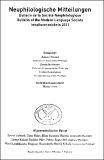Files in this item
"¿Porque este libro es más antiguo?” : The Early History of the Diálogo de la lengua Revisited
Item metadata
| dc.contributor.author | Anipa, Kormi | |
| dc.date.accessioned | 2013-10-14T14:01:02Z | |
| dc.date.available | 2013-10-14T14:01:02Z | |
| dc.date.issued | 2011 | |
| dc.identifier | 5167421 | |
| dc.identifier | caed89b0-df0b-4a32-9a71-f7d9e27d76af | |
| dc.identifier | 79961091824 | |
| dc.identifier | 000292630300001 | |
| dc.identifier.citation | Anipa , K 2011 , ' "¿Porque este libro es más antiguo?” : The Early History of the Diálogo de la lengua Revisited ' , Neuphilologische Mitteilungen , vol. 112 , no. 2 , pp. 131-145 . | en |
| dc.identifier.issn | 0028-3754 | |
| dc.identifier.other | ORCID: /0000-0002-2639-0807/work/69029124 | |
| dc.identifier.uri | https://hdl.handle.net/10023/4077 | |
| dc.description | Funded with a grant by Carnegie Trust for the Universities of Scotland | en |
| dc.description.abstract | Juan de Valdés was one of the most interesting figures of 16 th-century Spain. Apart from his theological works, his Diálogo de la lengua typified the humanistic fervour of his day. On the preliminary folio of its earliest known manuscript appears this annotation: 'No Parece toca el expurgro Nouisso del año de [⋯] aeste quaderno. Fray Pedro de Carvajal, Predicador general'. The brackets represent a date, which looks very much like 1540, but has been traditionally transcribed as 1640. Neither this date nor the identity of the annotator has ever been investigated before. Next to Carvajal's annotation appears a puzzling, later one, used as the main heading for this article, which also has not been understood or seriously considered before. The aim of this article is to problematize these issues and investigate the identity of the first annotator, his motivation for the annotation, when he carried it out, the suspicious date he alluded to, and the meaning of the second annotation. It is hoped that this research will not only expand the current state of our still limited knowledge about the early history of the Diálogo - recently characterized by one scholar as bordering on complete ignorance - but also open up some fresh avenues for further work on this unique Renaissance work. | |
| dc.format.extent | 15 | |
| dc.format.extent | 921828 | |
| dc.language.iso | eng | |
| dc.relation.ispartof | Neuphilologische Mitteilungen | en |
| dc.title | "¿Porque este libro es más antiguo?” : The Early History of the Diálogo de la lengua Revisited | en |
| dc.type | Journal article | en |
| dc.contributor.institution | University of St Andrews. Spanish | en |
| dc.description.status | Peer reviewed | en |
This item appears in the following Collection(s)
Items in the St Andrews Research Repository are protected by copyright, with all rights reserved, unless otherwise indicated.

